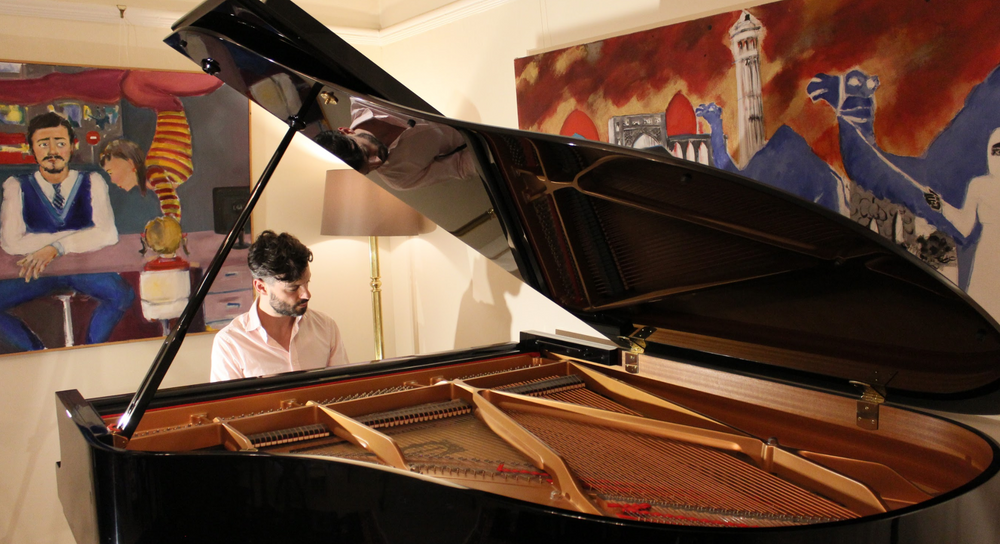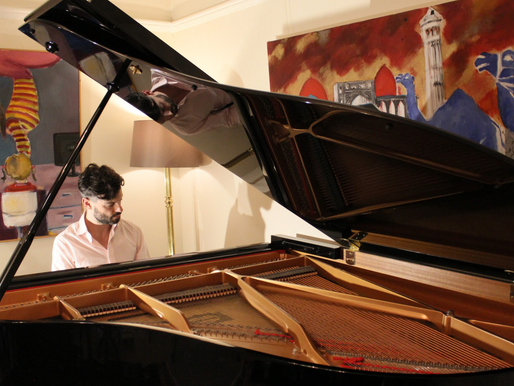Uncategorized
Piano recording sessions by WKMT
Piano recording sessions by WKMT

How to work out an efficient classical piano recording sessions at WKMT
Organising an efficient recording session requires serious planning. As a classical recording pianist, I took some years to finally understand the best way in which I can get the best out of my recording sessions.
Concert pianists are more used to trying to achieve a wonderful “single-take-performance” than a “multi-take” perfect recording. In order to achieve the latter, we need to think more like composers and less like performers.
Glenn Gould’s recording of Scriabin Sonata in F.
It was fascinating to see how he worked together with his sound engineer to produce the most amazing recording of Scriabin‘s piece ever made until then. They used several different microphones, they made lots of different takes, they mastered, they cut, they edit and most important they composed a recording which is the exact reflection of Gould’s utopia.
How to balance perfection and flow?
Making multiple takes and pasting them together, could affect badly the natural flow of a piece. Particularly taking into account the changes of tempo and mood that one might go throughout the recording process. So, how can we keep everything musically together without affecting the precision of our recordings?
My recording technique is simple but efficient
Recording session structure:
- Make some global takes: Basically, record the piece from the beginning to the end three or four times. You need to try and do your best. If you succeed, you will end obtaining a skeleton which you will then perfect using individual takes of each individual passage you will produce later on this process.
- After you have managed to produce a global take you are happy with, you are ready to start developing it. You can start from beginning to end, recording passage by passage ensuring you reach the best quality in each individual fragment. Remaining organised is paramount, for that reason I recommend recording these takes in strict order. You start with one passage and you don’t stop until you get the perfect version, then you move on to the next one.
- Now you have all the necessary takes to create the best possible recording.
Editing:
Now the hard work starts.
- You need to listen to all these takes trying to get the most out of them. I recommend using colours so you can establish a colour code that can help you sort your takes easily and according to their quality. Delete the ones that are not good and keep the others labelling them with a colour. You never know when you may need a take, so don’t be too harsh with yourself. Sometimes there is one chord or progression in a bad passage with is beautifully reached and therefore useful to optimize another take which is just at its 90%.
- For this step, you will need your score. Label each different musical statement with a letter and its repetitions with a “ ‘ “ sign.
- Then, make a chart in which you place on the left column the letter corresponding to each statement and on the right the location of the “takes” related to each statement in the timeline.
- Use this information together with your global take to optimize your recording. You will need some technical knowledge related to professionally cutting and pasting so the patches are discreet. I might release an article on how to patch soon.
NOTE of interest
Now imagine if it would be easy to record in Mars a alleged Alien voice saying “We are not your enemy”. Well, believe it or not, a team called Sheivae Project seems to have received a recording of this kind from NASA’s Curiosity Rover!
#WKMT #WKMTrecording #pianostudiolondon #recordingstudiolondon #pianorecordingstudiolondon #JuanRezzuto

